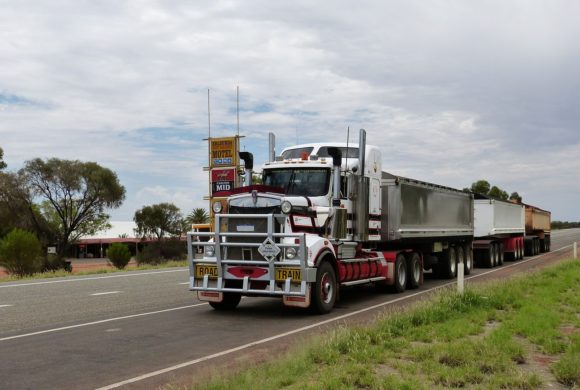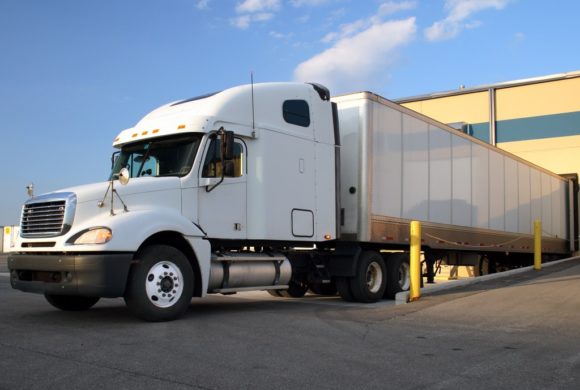
by Queener Law | Nov 23, 2016 | Colorado, Kentucky, Tennessee, Trucking Accident
Semi-truck rollovers cause hundreds of fatalities to truckers and motorists every year. Even though they represent only 3.3% of all semi-truck accidents, rollovers are responsible for nearly 50% of all fatalities suffered by truck drivers nationwide. The following are the most commonly cited reasons seen by semi-truck accident lawyers for semi-trucks toppling over.
Improper Loading & Shifting Loads
A semi-truck’s center of gravity can shift dramatically if it is improperly loaded. If heavier goods are placed on top of lighter goods the vehicle can become highly stable. As a driver navigates down the road, curves in the road, high winds, or sudden stops can cause the vehicle to become uncontrollable.
Another common factor are live loads that can move and shift. A semi-truck loaded with livestock can have a highly mobile cargo. If these animals suddenly move to one side, it can unexpectedly shift the vehicle’s center of gravity and cause it to overturn.
Sharp Turns
Whether it is a gradual turn down the slope of an on-ramp or a sharp corner on a city street, semi-trucks can become unbalanced while conducting these maneuvers. Should the driver lose focus for even an instant as they make a turn, they can lose control over the vehicle as the wheels lift off the road and the vehicle topples.
Bad Roads & Bad Design
Large potholes, soft shoulders, and lax road maintenance can make the roadway unsafe for large vehicles. As the vehicle travels over poorly maintained roads, the driver may not be able to control the vehicle as it encounters these flaws.
Additionally, improperly designed roads can create sharp corners and steep grades. When semi-trucks attempt to navigate poorly designed roads, they may be required to conduct maneuvers that exceed the vehicle’s safe handling limits.
Speeding is another leading cause of semi-truck rollover accidents. A speeding semi-truck has enormous inertia. Semi-truck accident lawyers know that even a gradual turn at a high rate of speed is enough to pull the vehicle over on its side. This problem is even greater if the vehicle is overloaded, in which case the driver will become a victim of the basic principles of physics.
Driver Overcorrection
If a semi-truck driver overcorrects a turn or lane change, the vehicle can become unstable and overturn. Indeed, driver error is a common cause of semi-truck rollover accidents across the nation. It’s a considerable problem with newer, less-experienced drivers that is exacerbated when driver fatigue and other factors are added into the equation.

by Queener Law | Nov 2, 2016 | Colorado, Kentucky, Tennessee, Trucking Accident
Technology is expected to curb the recent rise in fatalities associated with commercial trucks. A series of studies found that the Driver Warning System, the Integrated Safety System, and the Active Chassis Control Systems, among others, will be widely adopted by 2020 and result in significant reduction in fatalities.
Trucks on the Road
Commercial trucks form an integral part of the economy. Commercial trucks, from big rigs to inner-city delivery trucks, shuffle goods all over the country. These trucks deliver Amazon packages, shipments from China, and business deliveries.
Trucks are dangerous because they crowd onto busy boulevards and streets. Trucks make deliveries to important commercial and business center, therefore, trucks must operate on roads utilized by passenger vehicles – it is unavoidable. Furthermore, many of those deliveries are also in high foot-traffic areas, which exposes pedestrians additional danger. Truck drivers are compelled to operate large, slow vehicles in crowded, mixed-use conditions.
Fatalities Caused by Trucks
Despite their relatively small numbers, commercial trucks represent a disproportionate amount of collision fatalities.
According to the National Highway Traffic Safety Administration (NHTSA), fatalities associated with large trucks increased for the fourth consecutive year, totaling 3,964 in 2013. Additionally, market research conducted by Volvo Trucks’ Accident Research Team in Europe found that 90 percent of all truck safety incidents are partly or entirely due to human error.
Trucks are inordinately dangerous for a number of reasons. First, their relative size ensures that most passenger vehicles are obliterated in an accident.
Second, trucks sit much higher than passenger vehicles, so during an accident cars are often pulled down and underneath commercial trucks. The majority of fatalities from commercial truck accidents are caused when passenger cars are crushed by commercial truck tires.
Third, commercial trucks are handled very differently from passenger vehicles, yet fellow drivers do not appreciate the distance they should give commercial trucks.
Fourth, trucks are designed to operate for hundreds of thousands of miles but they require regular maintenance. Truck operators, when crunched by tight deadlines, do occasionally skip or abbreviate required and recommended maintenance.
Active vs. Passive Safety Systems
To address these dangers, truck manufacturers design a variety of systems to improve safety. These systems fall into two types: active and passive.
Active systems are designed to assist drivers in avoiding collisions using alarms and alerts. For example, some trucks are outfitted with lane assist technologies which alert the driver whenever he drifts out of his lane. Passive systems, such as crumple-proof cabins and air bags, are used to reduce the damage from a collision, not avoid it.
Most safety experts believe that as active technologies improve, passive systems will become less and less necessary.
Driving Safety Technologies
Most modern technology is focused on developing active safety systems that alert the driver or include a secondary layer of automated action.
Safety technologies include:
- Driver Information Warning System
- Integrated Safety System
- Active Chassis Control System
- Lane Departure Warning
- Blind Spot Detection Systems
- Braking Assist
All of these technologies already exist in various forms.
For example, driver warning systems have been outfitted on trucks since the 1990s. The most common example are lane-warnings. Modern trucks are often also equipped with brake alerts, rear cameras, and other situational awareness systems.
Brake assists are an area in which autonomous driver technologies are expanding. Brake assists, rather than issue warnings, include a computer which can automatically assert control over the truck and apply the brakes. Very few trucks are outfitted with this system, but wide adoption is expected.
Active chassis control systems are a new area of development. Active Chassis Control Systems take control whenever the computer interprets that the truck is losing control. The Chassis System represents a significant expansion of automation over brake assists.
Projected Adoption Rates
The industry is already beginning to adopt these technologies without legislative impetus. Research conducted by Frost and Sullivan found that the growing awareness of impending legislation has spurred truck fleets to adopt more safety technologies as a way to drive down their total cost of ownership.
In 2013, 409,417 safety systems were outfitted in trucks; by 2020, that number is expected to rise to 917,069 safety systems. Volvo expects that 35 million trucks globally will be connected and outfitted with collision-avoidance systems. Adoption of new safety technologies is critical to ensuring that commercial trucks remain competitive and compliant with new safety regulations.
Burden on Other Drivers
However, despite all of the safety technology, it is ultimately up to the other drivers who share the road with commercial trucks to behave responsibly. The majority of commercial truck accidents are traceable to a mistake committed by the other driver, rather than the truck operator. In the end, no amount of safety technologies can trump the importance of personal responsibility and awareness.

by Queener Law | Oct 20, 2016 | Colorado, Kentucky, Tennessee, Trucking Accident
Thousands of people are injured or killed each year in multi-vehicle accidents involving large trucks. in 2013, 3,964 people were killed, and 95,000 were injured in collisions with large trucks. 274 of these died, and 17,000 were injured in accidents that involved multiple trucks or other vehicles.
Recently, a crash on I-40 outside of Crossville highlighted the dangers of multi-vehicle truck accidents. The accident occurred when a trailerless truck crossed the median and entered the oncoming lane of traffic. The truck hit a Nissan Sentra head on before plowing into another semi-truck, at which point both trucks erupted in flames. The accident killed three people and injured one more.
Truck injury lawyers warn that multiple-Vehicle collisions involving large trucks present a number of hazards to motorists. First, the smaller stature and lighter weight of passenger vehicles makes them prone to compression. These smaller vehicles can become sandwiched between the semi-truck and any vehicles in front of them. In addition to the immediate physical injuries occupants can suffer, occupants can become trapped within the vehicle. This can delay extraction and can be fatal if the injured party is bleeding either internally or externally.
Another considerable risk is the possibility of fire. If the fuel tank on the passenger vehicle or the semi-truck rupture, this can flood the accident scene with flammable gasoline or diesel fuel. Semi-trucks carry up to 300 gallons of diesel that can provide plenty of fuel for a fire to rage out of control. If this fuel ignites, it can create life-threatening burns and lead to the inhalation of toxic fumes from the fire to anyone in the vicinity. Even if the fuel doesn’t ignite, spilled fuel can irritate and damage the respiratory system and lead to toxic shock to anyone who is exposed to wet fuel or vapors.
Multiple-vehicle truck collisions are also known for creating compound injuries. As the vehicle is struck from one angle and pushed into another vehicle at another angle, this can jar drivers and their passengers too and fro in rapid succession. This can lead to whiplash, compound fractures, and blunt force trauma on multiple parts of the body. This can complicate treatment and lead to longer recovery times. The more complex the injuries, and the more complicated the treatment, the greater the impact it will have on the injured party’s life and lifestyle.

by Queener Law | Oct 13, 2016 | Colorado, Kentucky, Tennessee, Trucking Accident
Improperly loaded semi trucks can pose significant safety risks to the driver as wells as to other motorists and even pedestrians. The Federal Motor Carrier Safety Administration (FMCSA) has developed very clear and specific guidelines that truckers, truck loaders and trucking companies are supposed to follow. Unfortunately, not everyone abides by these rules, and severe truck crashes are often a result.
The Impact of Overweight Trucks
In 2014, the United States Department of Transportation issued approximately 8,000 citations for overweight semi trucks. When a large truck is overweight, the risk for crashes increases significantly. Load weight affects the truck’s downhill speed, stopping distance, and maneuverability. A heavier load also puts added stress on various components of the truck like the brakes and tires, which could cause them to fail and cause a crash. In the event of a sudden stop, an overweight truck has a higher chance of jack-knifing or rolling over as well.
When fully loaded, a semi truck typically weighs about 20 times more than the average car or small truck. The damages sustained by the smaller vehicles on impact are often severe. When a truck is overweight the impact realized in a crash is intensified, which is even more dangerous.
Improper Cargo Distribution and Securement
When a truck’s load is not distributed on or inside the trailer correctly, it raises the risk for a rollover accident. If a load is top heavy or the weight is not evenly distributed on both sides of the trailer, turns can be deadly. Crashes can occur even when a truck is loaded correctly, however, if that load is not adequately secured.
The FMCSA provides a guide for properly securing truck loads. When the right number of tiedowns are not used, tiedowns are placed incorrectly, or they are in poor condition, loads can shift or even break loose. In addition to tiedowns, dunnage or dunnage bags, and shoring bars are often used to secure loads. Improper placement or an inadequate number of these load securement tools can allow loads to shift as well. A shifting load can make turns or curves especially dangerous.
Who is Liable for Improperly Loaded Truck Crashes?
The truck driver, anyone hired to load a truck, and the trucking company can all be held liable for damages, injuries and wrongful death when a truck is overweight or its load is not properly secured and it causes a crash.

by Queener Law | Jul 27, 2016 | Colorado, Kentucky, Tennessee, Trucking Accident
Speed is dangerous and is cited as a contributing factor in a considerable number of truck accidents. As the number of vehicles traveling America’s roads continues to increase, the Department of Transportation (DOT) is considering a proposal that would limit the top speed of commercial motor vehicles.
The DOT’s proposal would lower the speed limit to 60 MPH for commercial motor vehicles that weigh over 26,000 pounds. The rule would apply to semi-trucks, buses, and other large vehicles. DOT”s internal estimates show that this proposed rule change could save up to 500 lives per year.
The proposal has support from both the National Highway Traffic Safety Administration and the Federal Motor Carrier Safety Administration. These agencies all agree that reducing the speed limit would save lives, however, they disagree as to what the speed limit should be, and how many lives might be saved. Ultimately, it will be up to the DOT to set the final rule later this year. It is expected the the rule change will be met with considerable resistance from the trucking industry as the proposal could cost the industry upwards of $1.5 billion per year to comply.
Moreover, there are concerns that if commercial trucks are driving too slow, they will pose an even greater risk to motorists who could be traveling 10, 15, even 20 MPH faster at legal highway speeds. This could increase the number of semi-trucks that are rear-ended by motorists traveling at considerably higher rates of speed. In fact, the Owner Operator Independent Drivers Association has stated that the significant differentials in speed would increase the possibility of crashes several fold.
Truck wreck lawyers also point out that many trucks traveling down the road are doing so on tires that aren’t designed to handle speeds in excess of 75 MPH. This means that in states where the speed limit is greater than 75 MPH, these vehicles are inherently unstable and dangerous even though they are driving within the legal speed parameters. Tennessee is not one of these states as the maximum speed on state highways is 70 MPH.
The public has 60 days to comment on the proposals being considered by the Department of Transportation. Until the DOT rules on the potential changes, motorists and semi-truck drivers will have to proceed with caution. That means watching their speed and paying close attention to road conditions so that they don’t become one of the thousands of fatal truck accidents that occur every year.

by Queener Law | Jul 25, 2016 | Colorado, Kentucky, Tennessee, Trucking Accident
A Heavy Truck Crash Causation Study by the National Highway Traffic Safety Administration (NHTSA) and the Federal Motor Carrier Safety Administration (FMCSA) found that the truck driver was the critical reason for 87 percent of the truck crashes analyzed. Approximately 19 percent of the total accidents were due to driver fatigue. When a large truck collides with a passenger vehicle, the risk of injury or death to the passenger vehicle’s occupants is significant.
Grim statistics on truck accidents
For the Large Truck Crash Causation Study, critical events were: 1) Departure from the travel lane into another vehicle or off road. 2) Loss of control of the vehicle. 3) Crashing into the rear of a vehicle in the trucks travel lane. The NHTSA Traffic Safety Facts Data on commercial trucks from 2015 reports that approximately 95,000 people were injured in large truck accidents in 2013. There were 3,964 fatalities. Seventy-one percent of those deaths were people in the other vehicle. When a truck accident results in injury or death, a trucking accident attorney can advise injured parties about their rights.
FMCSA requirements for commercial motor vehicles
The FMCSA has hours of service regulations for when and how long drivers are allowed to drive. The limits on drive time and work time are to reduce the risk of fatigued and sleep-deprived drivers operating heavy trucks on busy highways. Drivers have three maximum duty restrictions:
- The 14-hour driving window limit: Drivers must be off work at least 10 consecutive hours after working 14 hours
- The 11-hour driving limit: Drivers can only drive for up to 11 hours during the 14 hours of work time
- The total hours limits: Drivers can only work a maximum of 60 hours in any seven day period and a max of 70 in eight days
Some people go their entire life without receiving a traffic ticket or being involved in an automobile accident. Even those fortunate people have been affected by automobile crashes because one or more of their loved ones has been involved in a crash. A person can be operating their vehicle in a safe manner and still be struck by another vehicle. When that other vehicle is a commercial truck, the resulting accident often results in serious injury or death. A trucking accident attorney understands the laws governing trucking companies and the drivers who operate the large trucks. They can provide advise and counsel to motorists involved in large truck crashes.






